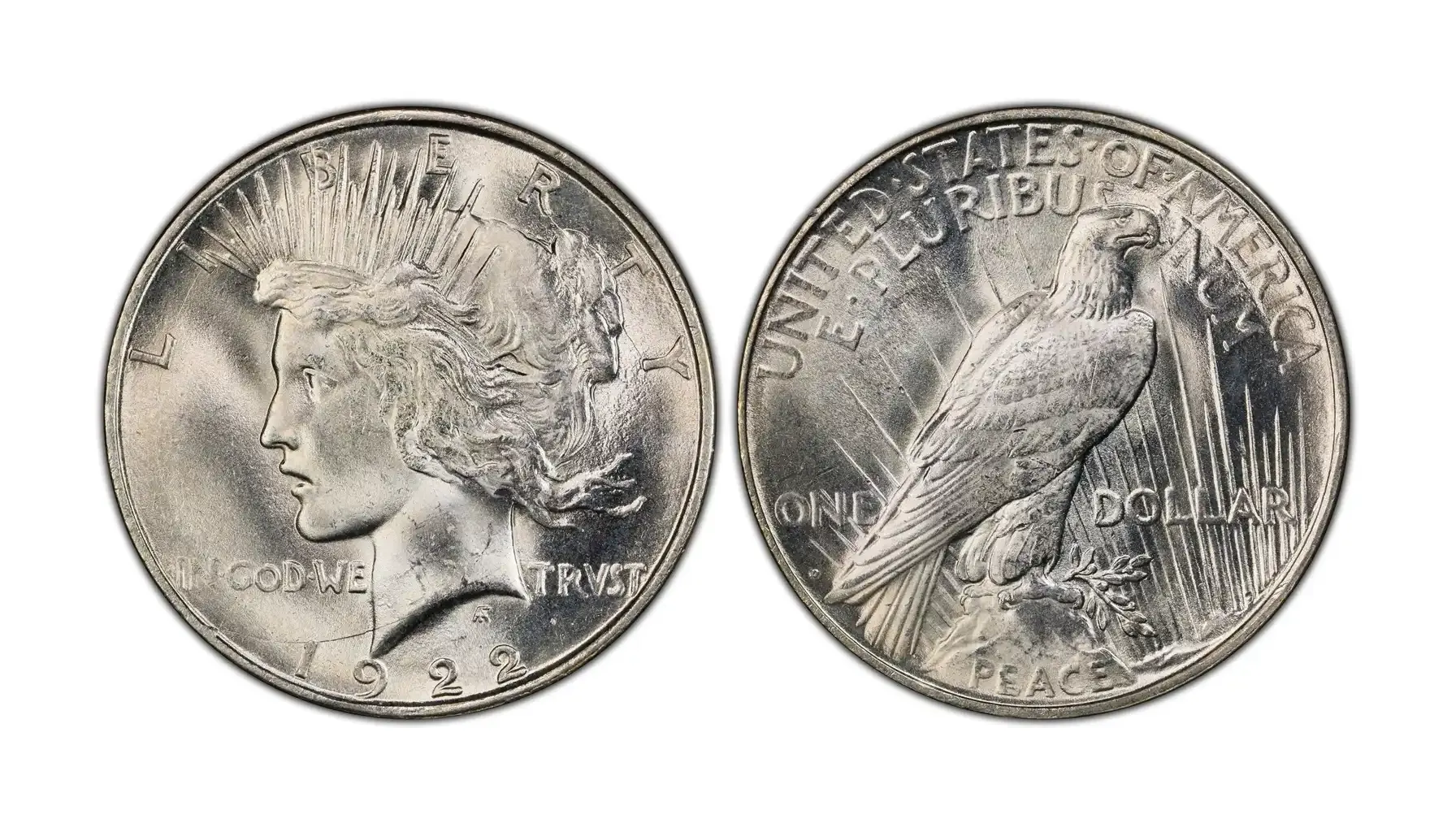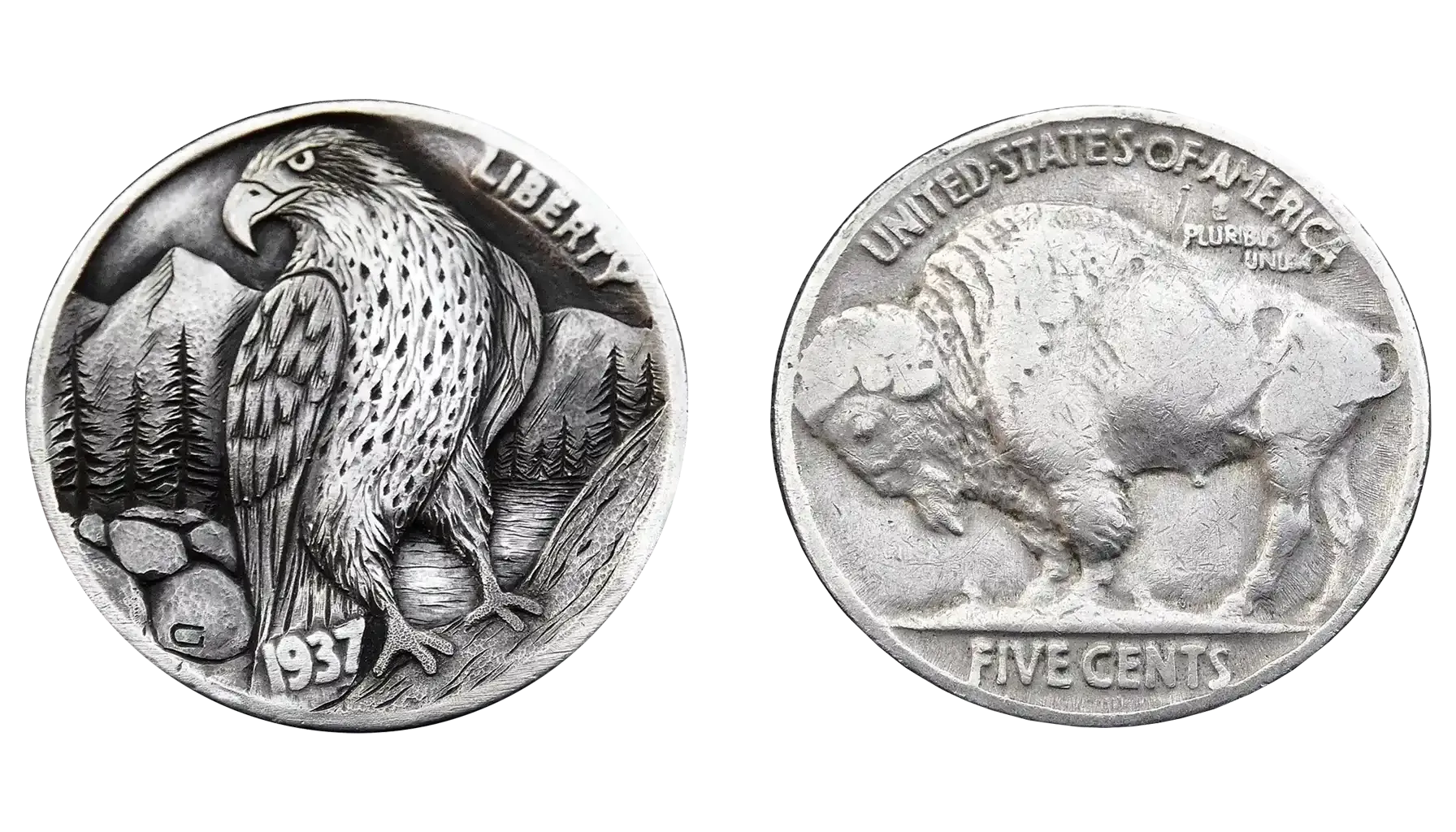Contents:
Some coins slip through unnoticed. Minted by the millions, passed from hand to hand, they live quiet lives — until someone spots the flaw. The 1969 Washington Quarter is one of those coins.
There are not so many 1969 quarters worth money. Most aren’t. But coins with bold doubled lettering, misaligned strikes, or details that were never meant to make it past inspection.
So, how much is a 1969 quarter worth today? And how can a coin identifier help assess it?
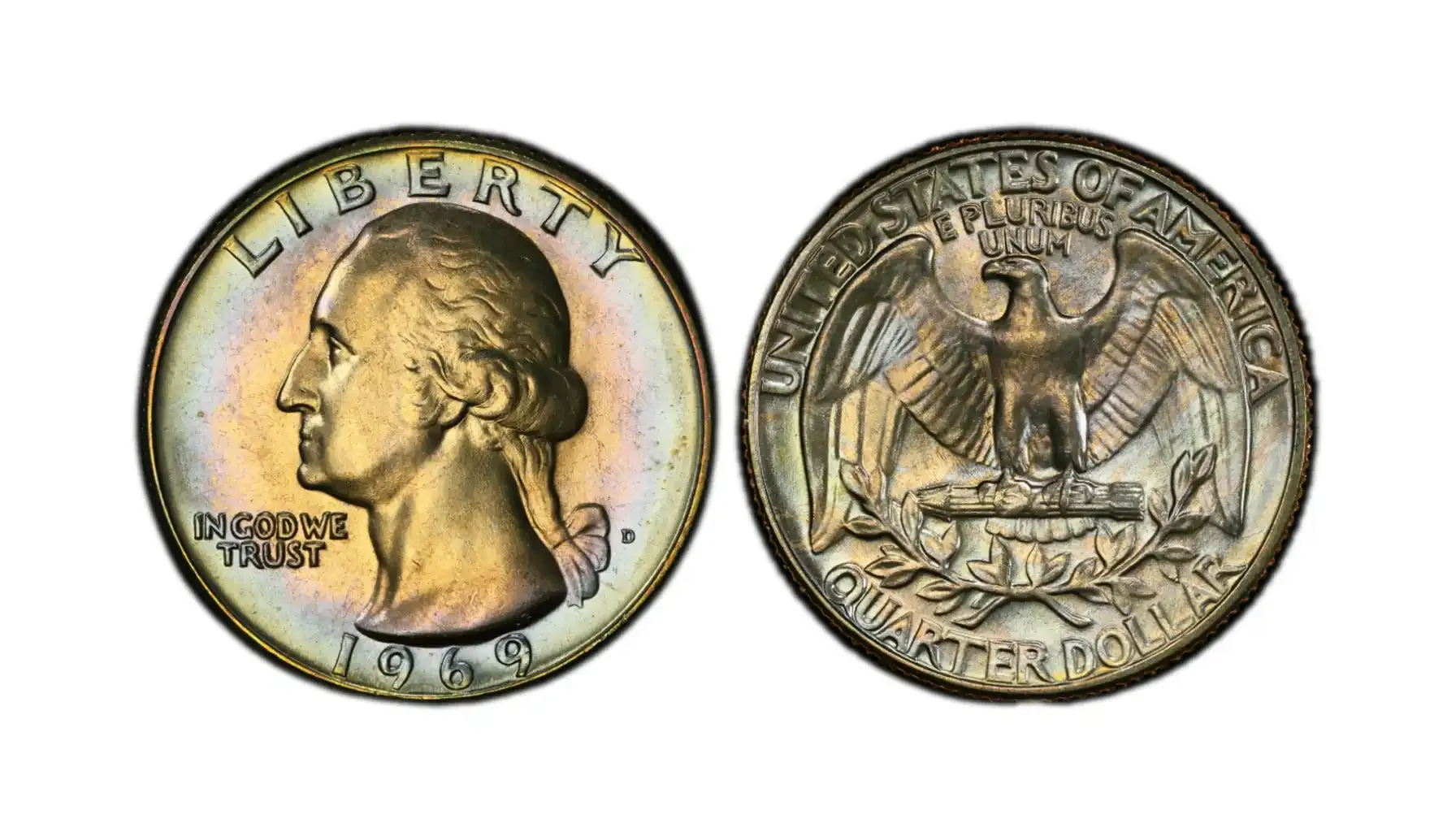
Basic Specifications
Feature | Detail |
Designer | John Flanagan |
Composition | 75% Copper, 25% Nickel (Clad) |
Weight | 5.67 grams |
Diameter | 24.3 mm |
Edge | Reeded |
Mint Marks | None (Philadelphia), D (Denver), S (San Francisco, Proof only) |
Mintage Totals | Over 346 million combined |
Note: No 1969 silver quarter pieces were issued for circulation that year — all are clad copper-nickel.
1969 Quarter Mint Marks
Mint marks are small letters on a coin that indicate which U.S. Mint facility produced it. They can influence both the rarity and the quarter 1969 value.
Where Is the Mint Mark on a 1969 Quarter?
Look on the obverse (front) of the coin.
The mint mark is located to the right of Washington’s ponytail, just above the "R" in "QUARTER DOLLAR."
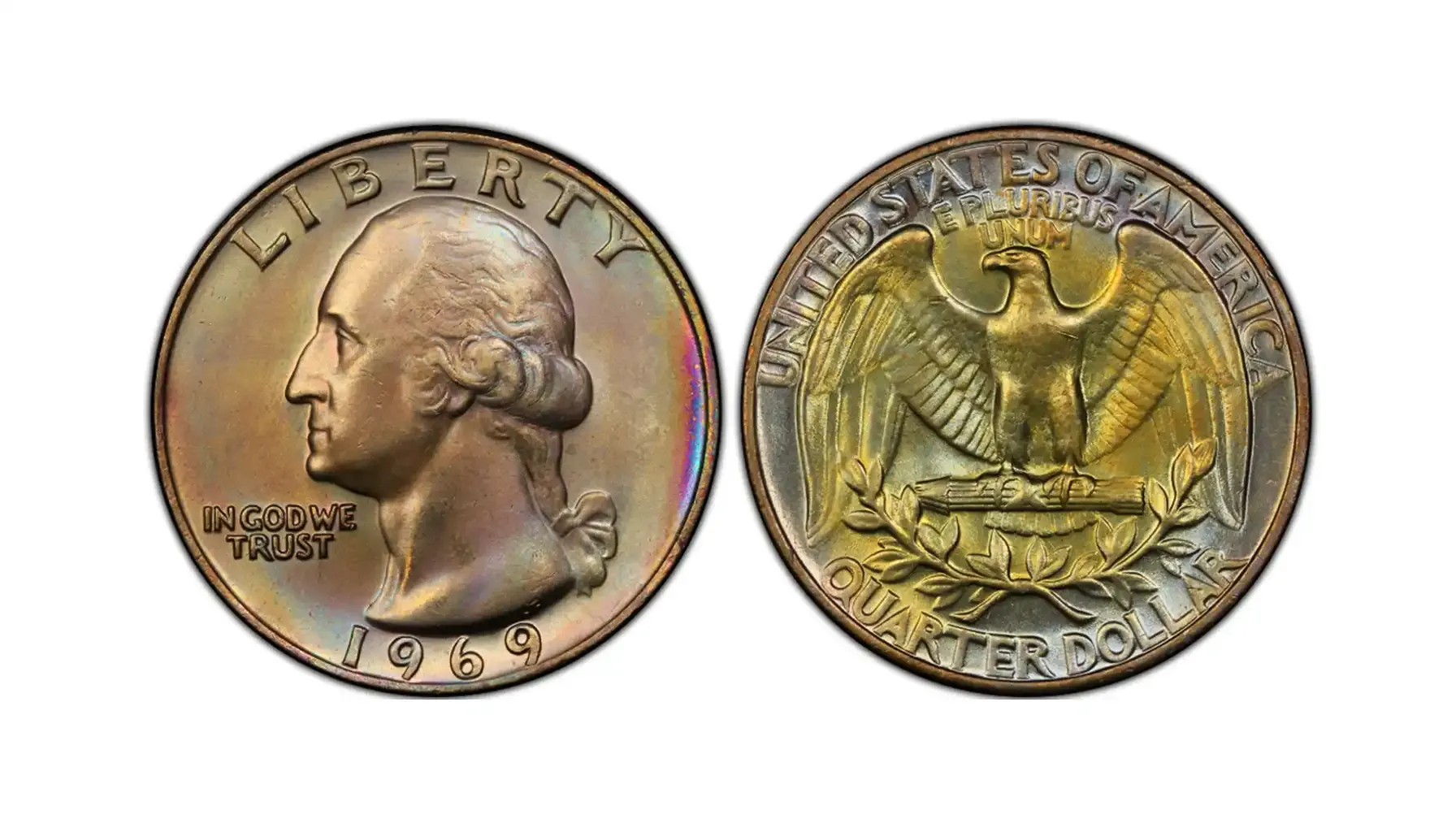
Mint Mark Breakdown
Mint Mark | Mint Location | Mintage (Approx.) | Type | Notes |
(None = 1969 quarter with no mint mark) | 114.3 million | Regular circulation | No mint mark = Philadelphia. Most common version. | |
D | Denver | 129.6 million | Regular circulation | Higher quality strikes are less common; watch for DDO errors. |
S | San Francisco | 2.9 million | Proof only (not circulated) | Found only in proof sets; mirror finish; collectable in high grades. |
Philadelphia quarters (1969 no mint quarter) are the most abundant and usually worth face 1969 quarter value no mint mark unless in high uncirculated grades or with errors.
Denver quarters (1969 quarter D mint mark) offer more collectible potential, especially with sharp strikes and error varieties like doubled dies.
San Francisco proofs (S) were never released into circulation and are easily identified by their shiny, mirror-like appearance. High-grade proof coins can bring premiums from collectors.
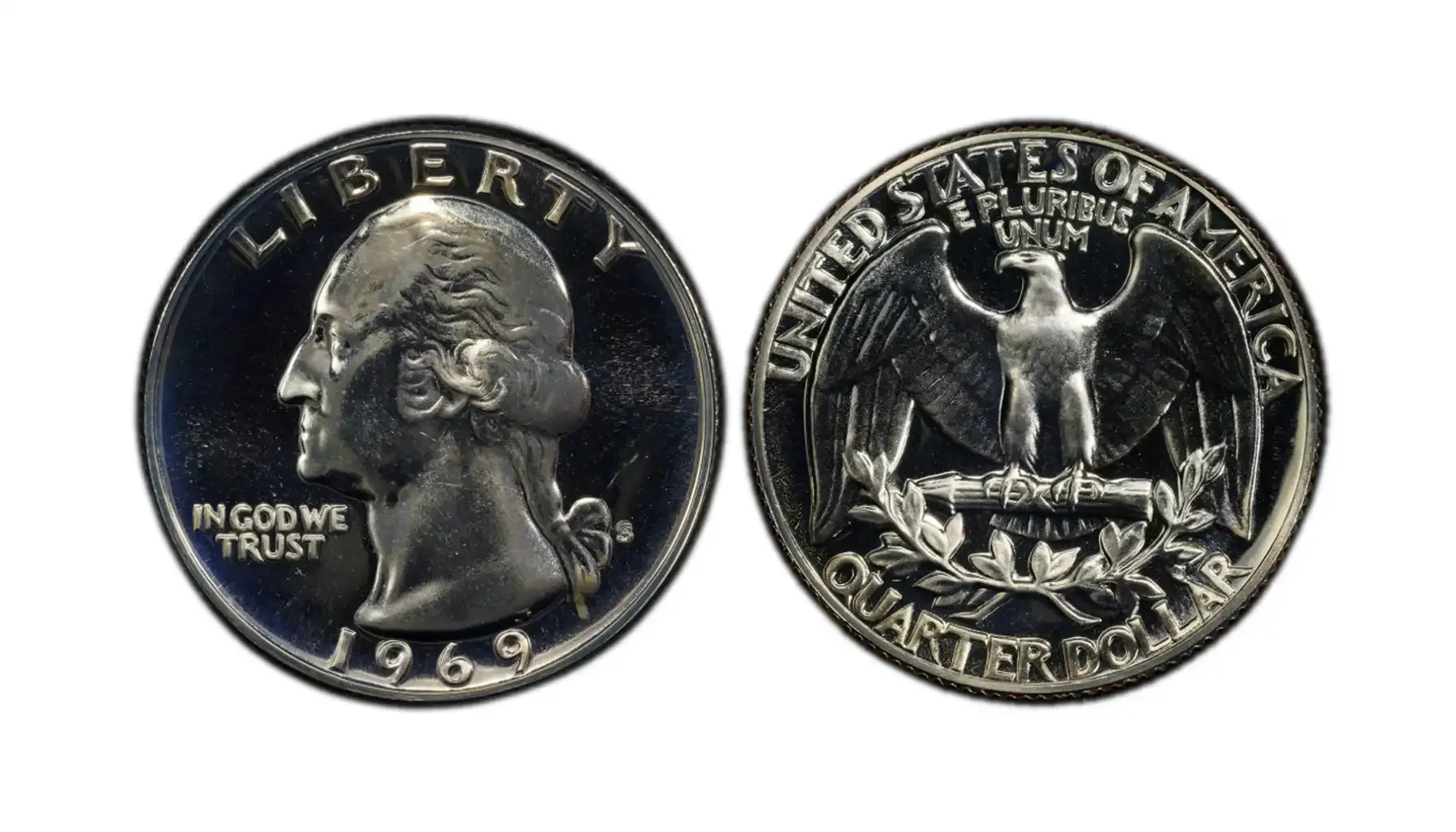
What Is a 1969 Quarter Worth?
Condition | 1969 quarter no mint mark value | 1969 D quarter value | 1969 S Proof quarter value |
Circulated | $0.25–$0.50 | $0.25–$0.75 | – |
Uncirculated (MS65) | $8–$18 | $10–$25 | – |
High Grade (MS67) | $200+ | $250+ | – |
Proof (PR67/PR69) | – | – | $10–$50+ |
Error Coins | Up to $3,000+ | Up to $2,000+ | Up to $1,500+ |
Rare 1969 Quarter Errors to Watch For
Some of the most valuable 1969 quarters are those that were never meant to be perfect. Here are some from the 1969 quarter error list:
1. Doubled Die Obverse (DDO)
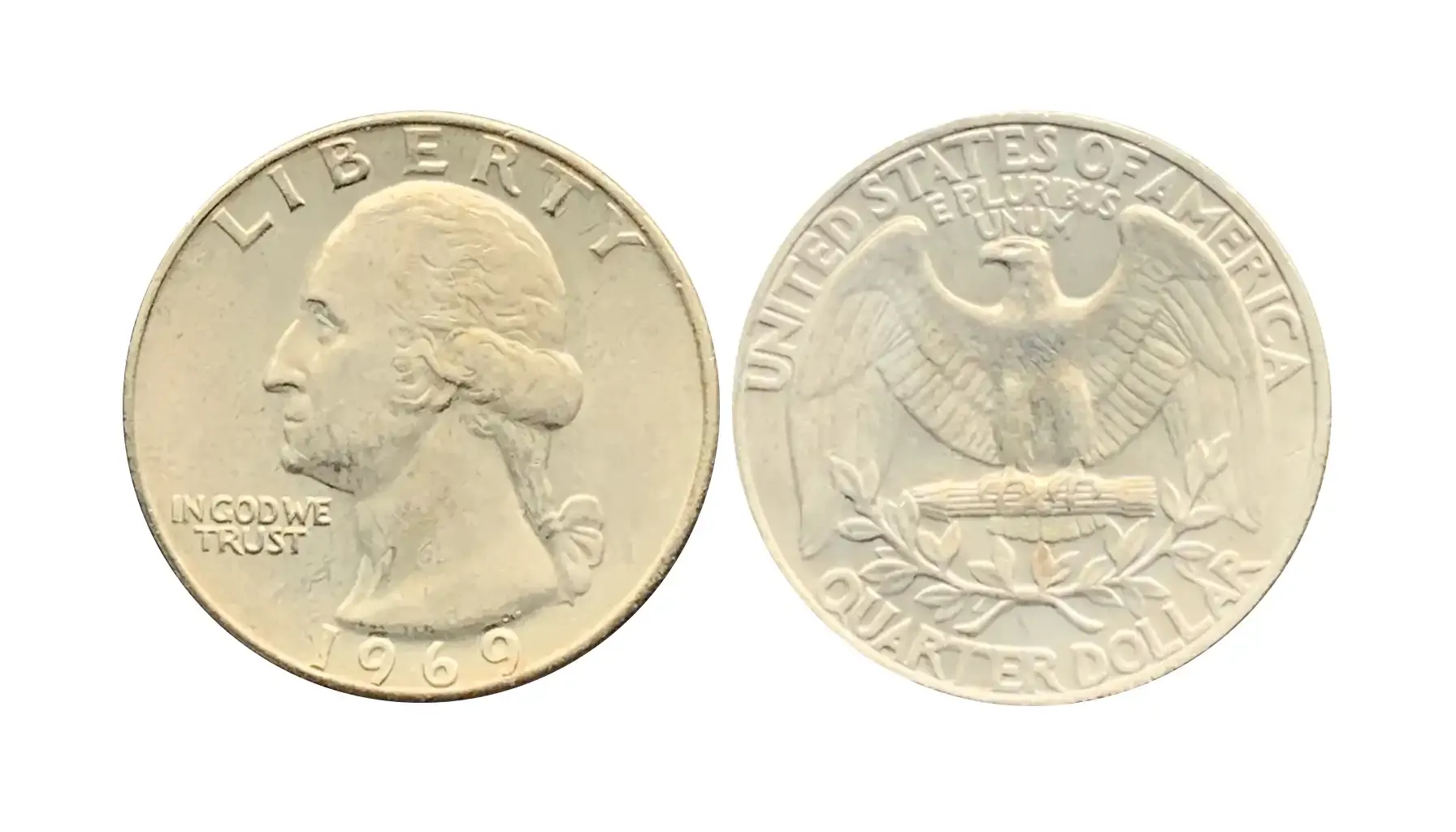
One of the holy grails of 1969 quarters.
What to Look For: Doubling in “IN GOD WE TRUST,” “LIBERTY,” and the date “1969.”
Value Range: $500–$3,500 depending on grade.
Tip: Use a magnifier — subtle doubling can go unnoticed with the naked eye.
2. Off-Center Strikes
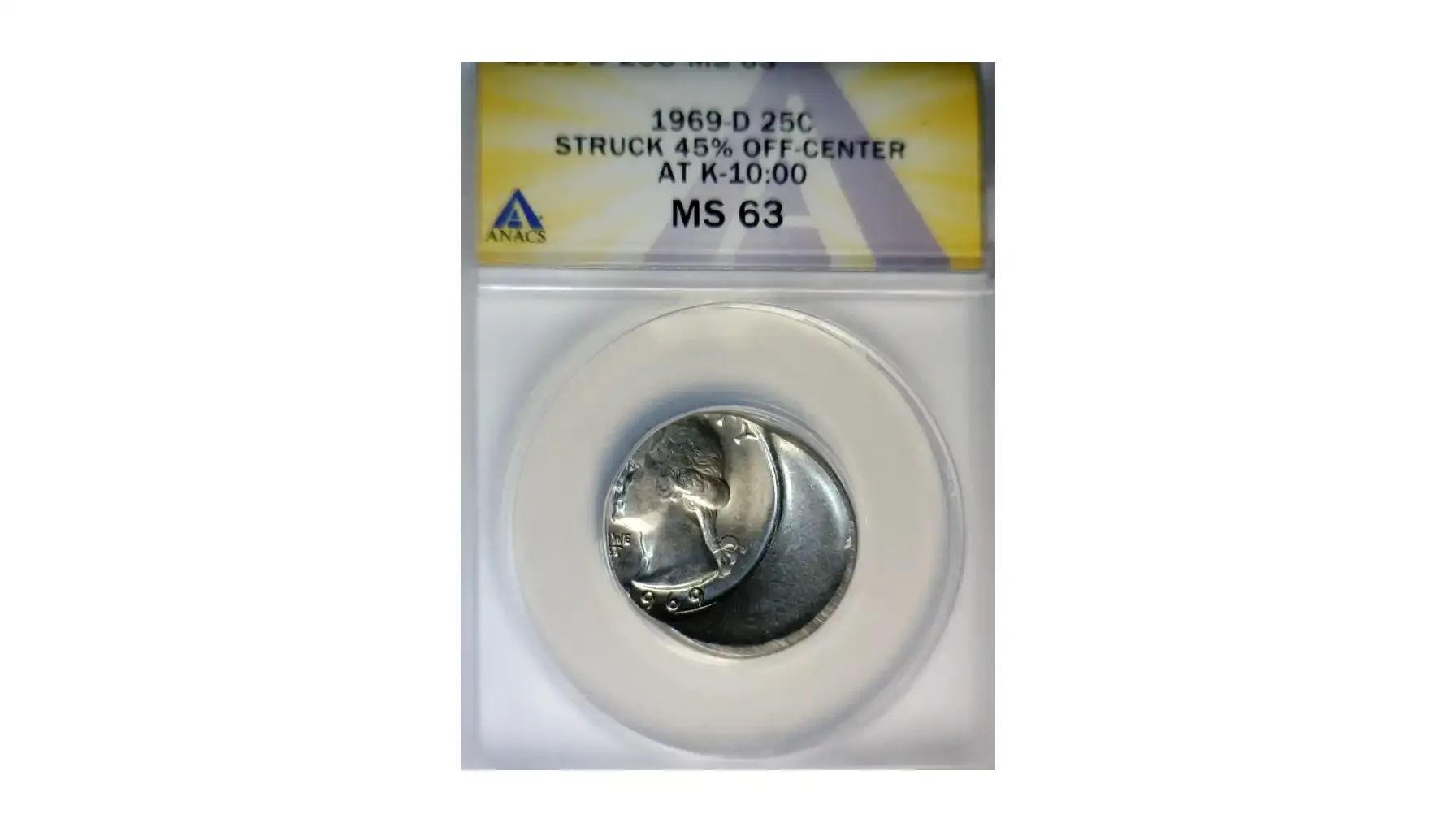
Caused when the coin isn't properly aligned during the strike.
What to Look For: Part of the design is missing; dramatic off-centers can show blank space.
Value Range: $50–$250+ depending on severity and how centered the date/mintmark is.
3. Struck on a Wrong Planchet
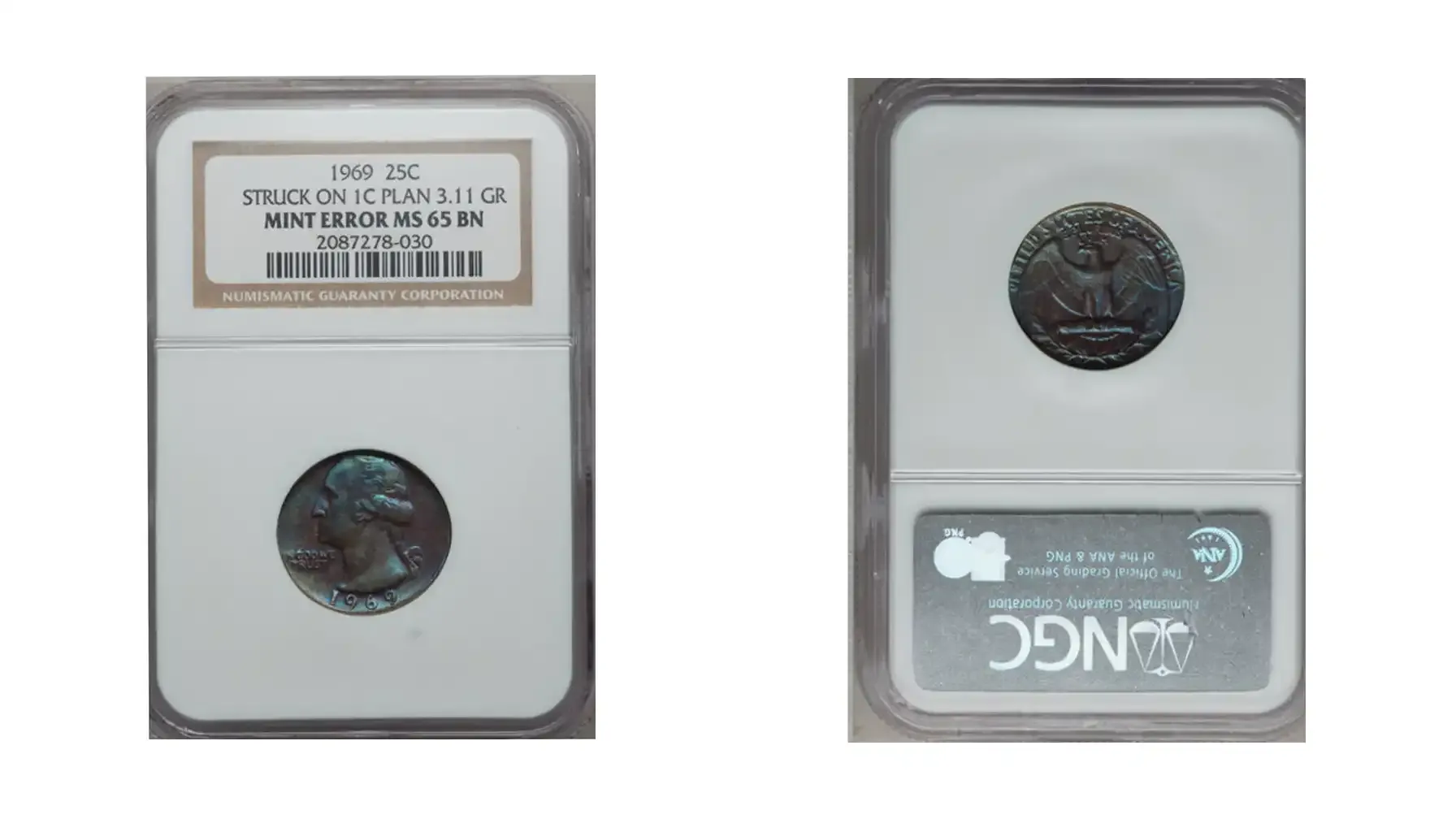
The coin is struck on a metal blank meant for another denomination.
What to Look For: Weight is wrong, size is off, rim may be incomplete.
How much is a quarter from 1969 worth if with this error? $500–$1,000+
4. Clipped Planchet

A part of the coin is “cut out” due to a misfeed in the coining press.
What to Look For: One or more curved clips on the coin’s edge.
Value Range: $30–$100+
Is There a 1969 Quarter Worth $35,000?
The quarter in question is a 1969-S Washington Quarter with a Doubled Die Obverse (DDO). This is not the regular 1969-S proof — this is a variety where the die used to strike the coin had a dramatic doubling on the front (obverse).
Feature | What to Look For |
Mint Mark | Must have an S (San Francisco) = high 1969 S quarter value |
Doubling | Strong doubling in LIBERTY, IN GOD WE TRUST, and date 1969 |
Surface | Proof-like mirror fields typical of San Francisco strikes |
Condition | Value skyrockets in high grades (PR66 to PR69) |
Important Notes
There are many counterfeits and fakes attempting to mimic this rare variety. Always authenticate through PCGS, NGC, or another reputable grading service.
Is each 1969 quarter worth $35 000? Not all 1969-S quarters are valuable — only the DDO variety commands five-figure prices.
Notable Sales
$126,500 at Heritage Auctions
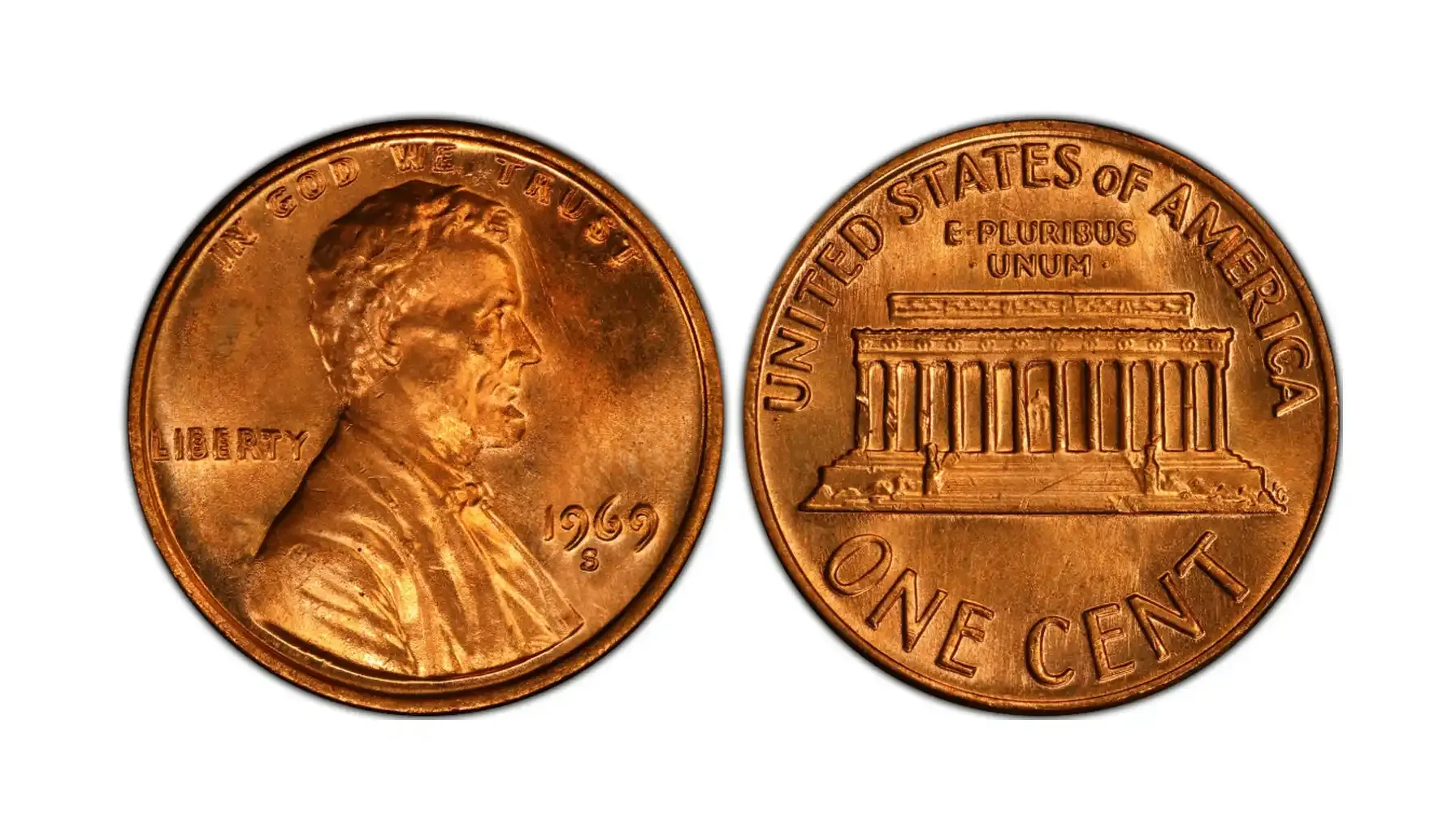
In January 2008, a 1969-S Lincoln Cent DDO graded MS64 Red by PCGS sold for $126,500 at a Heritage Auctions event. This sale set a benchmark for this variety, highlighting its significance in the numismatic community.
$40,800 at Central States Numismatic Society Convention
On April 26, 2018, another example of the 1969-S Lincoln Cent DDO, graded MS63 Red by PCGS, realized $40,800 during Heritage Auctions' Platinum Night session at the Central States Numismatic Society’s Convention in Schaumburg, Illinois.
Authentication: Key Features to Identify a 1969 Quarter
Feature | Description |
Mint Mark | Found on the obverse, to the right of Washington’s ponytail |
Proof Coins | Made only in San Francisco; mirror-like finish |
Strike Quality | Strong strike and luster are signs of higher value |
Wear and Contact Marks | Less damage = higher grade/value |
For a coin to have real 1969 quarter value today, its condition must be carefully evaluated. Even a rare 1969 D quarter error can be worth significantly less if it’s scratched, worn, or cleaned.
Grading Guide
Step 1: Check the mint mark
Step 2: Use a 10x jeweler’s loupe to detect doubling or clipping on a 1969 error quarter
Step 3: Weigh the coin — deviations from 5.67g could indicate a wrong planchet
Step 4: Compare your coin’s strike and luster to certified examples on sites like PCGS or NGC
Still not sure? Modern tools like Coin ID Scanner use photo recognition to evaluate the value of 1969 quarter in seconds. It's a must-have for modern collectors.
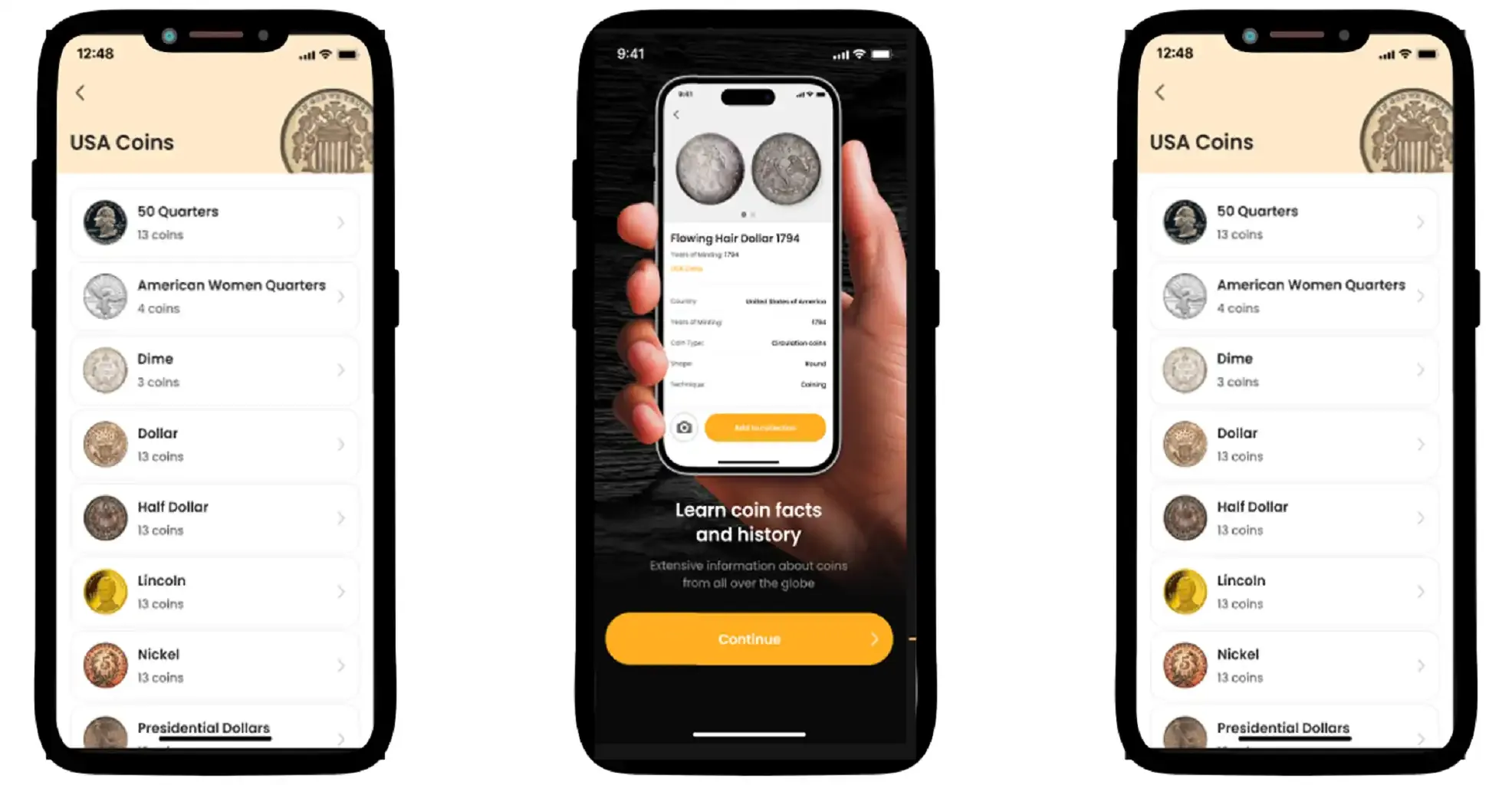
Why There’s No 1969 Quarter Silver Content
Prior to 1965, U.S. quarters were made of 90% silver. But due to rising silver prices and coin hoarding, the Mint transitioned to a copper-nickel clad composition in 1965. By 1969, silver quarters were history — which means any 1969 quarter with silver content is either a major error or a counterfeit.
Warning: Some scammers plate clad coins with silver to fool novice collectors. Always weigh and test questionable coins before buying!
Is a 1969 Quarter Worth Anything?
In most cases, the value of a 1969 quarter is just 25 cents. But there’s always that slim chance you’ve found a rare 1969 US quarter — one with an unusual strike, a minting error, or a pristine surface that turns heads at an auction.
If you think your coin could be special:
Avoid cleaning it
Store it safely
Consult a grading service
Or scan it with an app like Coin ID Scanner

Frequently Asked Questions
How do I tell the difference between a proof 1969-S quarter and a regular 1969-S coin?
First, it’s important to understand that all 1969-S quarters are proofs — there were no regular strike quarters minted at San Francisco for circulation that year. That said, not every proof is valuable, and not every shiny coin is a proof.
To identify a true 1969-S proof quarter, look for these traits:
Deep mirror-like fields and frosted devices (on high-grade proof strikes)
A sharp, high-precision strike with crisp edges
The “S” mint mark just to the right of Washington’s ponytail
A perfectly smooth rim and consistent, polished surface across the coin
Are 1969 quarters worth anything in this case? Some circulated proof coins may lose their shine over time, but the detail and strike quality still distinguish them from business strikes. Only rare error varieties — like the doubled die obverse — give a 1969-S proof substantial value.
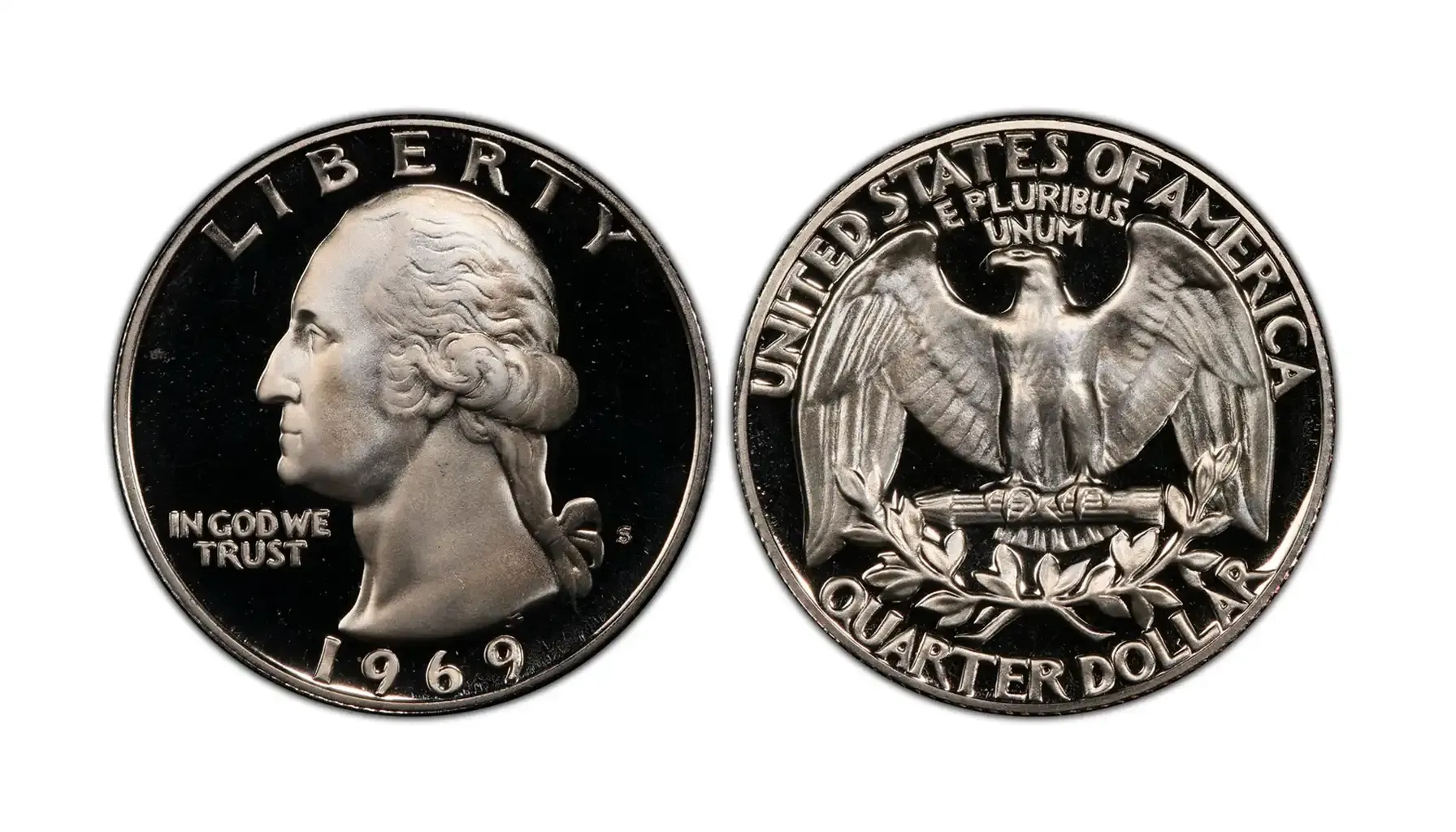
What’s the best way to store a valuable piece?
Coin condition is everything when it comes to value. Even a rare 1969 DDO quarter can lose hundreds — or thousands — of dollars in value due to scratches, tarnish, or environmental damage.
For preservation of a 1969 no mint mark quarter value and other mint marks, follow these best practices:
Never clean your coin — even gentle rubbing can ruin its grade.
Use acid-free coin flips or airtight capsules made from inert plastic (e.g., Mylar, PET).
Store coins in a cool, dry environment away from sunlight and humidity.
Use silica gel packs to control moisture inside safes or boxes.
For very valuable coins, consider third-party grading and encapsulation from services like PCGS or NGC. Their tamper-proof holders provide protection and credibility for buyers and auctions.
Are there other valuable quarters from the 1960s I should be looking for?
Yes — the 1960s produced several quarters with collector appeal, though the majority are clad and common. Here are a few to watch for:
Year | Key Variety / Feature | Potential Value |
Last year of 90% silver quarters | $5–$15+ in circulated grades | |
Transitional errors (silver planchets) | $5,000–$10,000+ | |
Missing clad layer or off-center errors | $100–$1,000+ | |
1968-S | Proof-only; cameo and deep cameo varieties | $10–$50+ |
What Is a 1969 Deuce and a Quarter?
The term “1969 Deuce and a Quarter” refers NOT to a coin, but to a classic American car — specifically the 1969 Buick Electra 225.
"Deuce and a Quarter" is slang for the Buick Electra 225, derived from its length: 225 inches from bumper to bumper.
The nickname became popular in American car culture, especially within the African American community, and was often used in music, street slang, and storytelling.
Is the 1969 Liberty Quarter the Same as the 1969 Washington One?
Yes.
“Liberty” appears on the obverse (front) of the coin, above George Washington’s head.
“Washington Quarter” is the official name of the coin series that began in 1932 to commemorate the 200th anniversary of George Washington’s birth.
So when someone says "1969 Liberty Quarter," they’re referring to the 1969 Washington Quarter — they’re just highlighting the word "LIBERTY" that’s featured on the coin.

